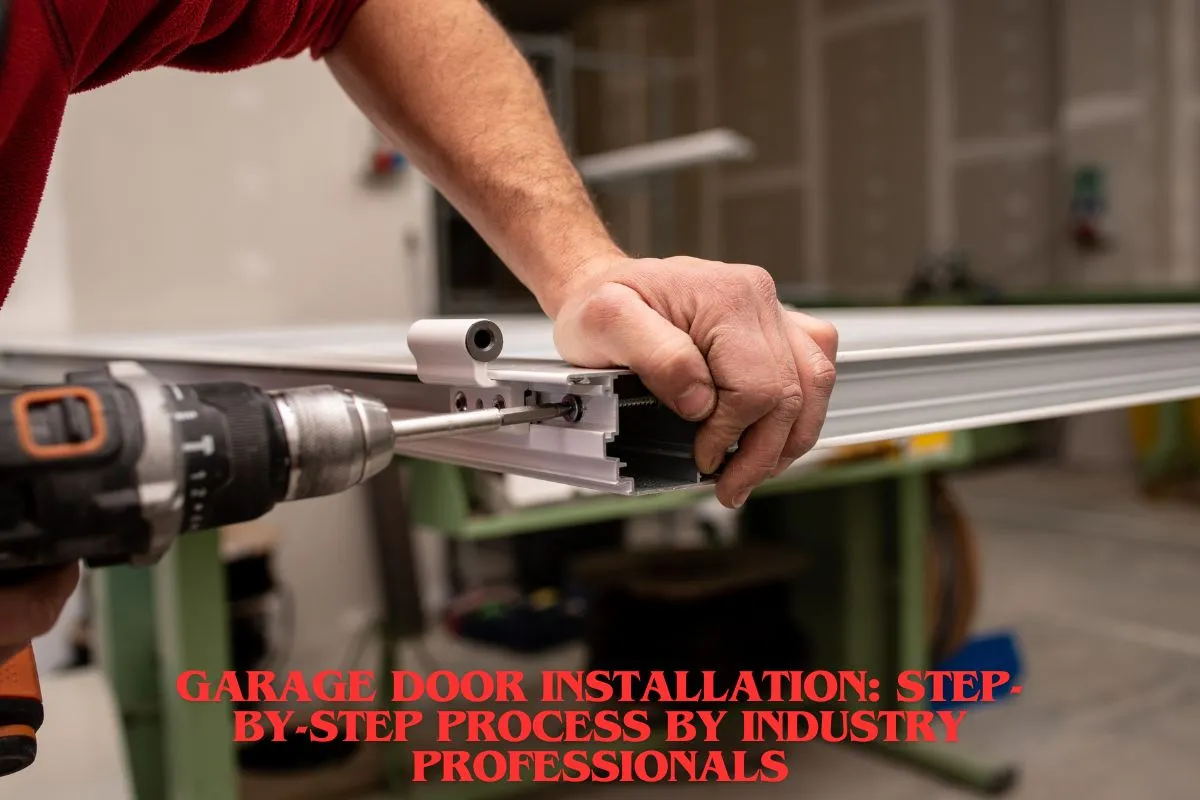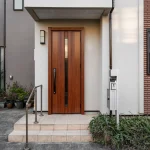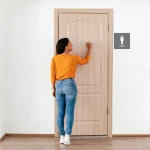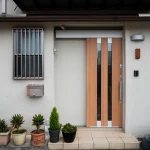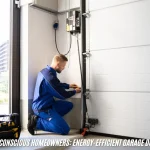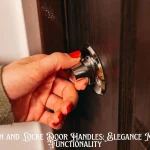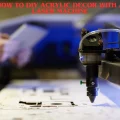If you’re considering installing a garage door, you likely have several questions. Don’t worry—you’re not alone! I remember when my aunt, Jane, was about to install a new garage door. She felt a mix of excitement and anxiety because she wanted it done safely and correctly. This guide breaks down every step, so you feel confident and ready, just like Jane did by the end!
Let’s go through the step-by-step process as trusted professionals do, and answer common questions homeowners have. We’ll keep things super simple, friendly, and always honest.
Why a Proper Garage Door Installation Matters
First, garage door installation is not just about looks. A properly installed door keeps your belongings safe, adds value to your home, and makes your daily life easier. It’s also about safety. According to professionals, many accidents occur because garage doors were not installed correctly. That’s why experts always take their time, use the best tools, and double-check their work.
Did you know? Once, I watched a neighbor try to install a garage door on his own without reading the instructions. The door ended up stuck halfway, and he had to get help from a pro to fix it. It’s much easier to do it right the first time!
Step 1: Preparing for Installation
Before you even pick up a tool, get everything ready:
-
Measure Everything: Measure your garage opening’s width, height, and depth. Double-checking these numbers is key.
-
Clear the Garage: Remove cars, tools, and any other items that might get in the way.
-
Read the Instructions: Every manufacturer’s directions are a little different. Always read them before you start.
Anecdote: My friend Sam learned the hard way when he didn’t notice a low-hanging pipe. The garage door track hit the pipe, and he had to rework part of the ceiling. Always check above and on the sides for anything that could cause trouble!
Step 2: Gather Tools and Equipment
Here’s what most professionals use:
-
Power drill
-
Wrenches and screwdrivers
-
Level
-
Tape measure
-
Stepladder
-
Safety glasses and gloves
You’ll also need all parts included with your garage door kit—like the panels, track, springs, rollers, brackets, and cables.
Step 3: Installing the Door Panels
-
Set the Bottom Panel: Lay the panel at the door opening. Make sure it’s level—use a spirit level to check.
-
Attach Hinges and Handles: Secure hinges to the top of the panel and add the handle.
-
Stack the Remaining Panels: Set each panel on top, connecting the hinges. Secure everything as you go.
Pro Insight: Professionals often call for help with this step. Garage door panels can be heavy—even the strongest person shouldn’t try lifting them alone. Teamwork makes it safer!
Step 4: Setting the Tracks
-
Install Vertical Tracks: Fit the side tracks onto the door opening and connect them to the door panels.
-
Add Rollers: Slide the rollers into the hinges and tracks.
-
Raise the Panels Upright: Gently lift the panel stack into a standing position. Attach the tracks to the frame, making sure everything lines up.
-
Install Horizontal Tracks and Curved Tracks: These connect the vertical tracks to the back of the garage, guiding the door as it moves.
Tip: If your tracks aren’t straight, the door might jam. Take your time, and tighten the bolts snugly but not too hard—over-tightening may bend the metal!
Step 5: Installing the Spring System
Most garage doors use either a torsion spring (above the door) or extension springs (alongside the tracks).
Warning: Springs are under a huge amount of tension and can be dangerous. Pros often say the spring step is one of the riskiest for beginners. I’ve seen even handy neighbors call a pro for this part.
-
Install Springs: Carefully follow the manufacturer’s instructions to attach the springs and cables.
-
Wind Up Springs: Use winding bars (never screwdrivers!) to adjust the spring tension.
Personal Insight: When my uncle tried adjusting a torsion spring himself, he snapped a winding bar. Sparks flew! He wasn’t hurt, but he called a professional right after. Sometimes, it’s best to know your limits.
Step 6: Connecting and Testing the Opener
If you’re adding an automatic opener:
-
Mount the opener to the ceiling above the door.
-
Connect the opener arm to the door.
-
Plug in all safety sensors and test the door movement.
Test Everything!
-
Open and close the door several times, listening and watching closely.
-
Make sure it doesn’t wobble or make strange sounds.
-
Test the safety sensors—place something in the door’s path to ensure it stops and reverses.
Final Inspection and Maintenance Tips
-
Check every bolt and screw.
-
Clean tracks and rollers—dust and dirt can block movement.
-
Apply a small amount of lubricant to moving parts.
Unique Insight: Many new doors come with a sticker for yearly tune-ups. Mark your calendar! Regular maintenance avoids surprise breakdowns.
How much does it cost to set up a garage door?
The price for setting up a garage door can vary. On average, professional installation may cost between $300 and $600, not including the door itself. The price goes up if you have special requirements, want a heavy or big door, or live in a high-cost area.
Tip: Always ask for a detailed estimate so you understand what you’re paying for.
How much does a garage door cost to fit?
Including both the door and fitting, most homeowners pay between $700 and $1,500 for a standard single door and installation. Premium doors (like insulated or custom styles) can be $2,000 or more.
Breakdown Example:
-
Standard steel single door with installation: $700–$1,200
-
Insulated double garage door with installation: $1,300–$2,500
I once helped my grandparents get a few quotes—the difference between company prices was huge! It pays to shop around.
What is the cheapest type of garage door?
The least expensive garage doors are usually single-layer, non-insulated steel doors. These are basic, sturdy, and do the job if you don’t need extra insulation or fancy looks.
Other budget options:
-
Aluminum doors: Lightweight, but dent easily.
-
Uninsulated wood doors: Look great, but require more care.
-
Vinyl doors: Resist dents, but not as strongly as steel.
Did You Know? My neighbor chose a budget steel door. He saved money upfront, but noticed more noise and heat during summer. Sometimes, spending a bit more for basic insulation can be worth it in the long run.
Can you install a garage door yourself?
Technically, yes! Many handy homeowners have done it. Kits usually come with instructions. But most pros (and many people who have tried it themselves) recommend professional installation, especially for heavier or larger doors and spring work.
Here are things to consider:
-
Safety: Springs can be dangerous if you’re not sure what you’re doing.
-
Tools: You’ll need more than a basic toolbox.
-
Time: Plan for an all-day project, even for a simple installation.
-
Warranty concerns: Professional installation may be required to keep your warranty.
Personal Note: I once tried helping a friend install a garage door. Parts went missing, and after hours of frustration, he called a local installer. The pro finished the job in under two hours, and it was stress-free!
Unique Insights from the Pros
-
Double-check measurements. Even a small measuring error makes installation much harder.
-
Ask for help with heavy doors. Professional installers almost always work in pairs to avoid accidents.
-
Take photos during assembly. If you ever need to repair something, you’ll know how it went together.
-
Keep the instruction manual handy. Don’t toss it! You’ll need it for future adjustments.
Final Thoughts
A garage door is one of the biggest moving parts of any home. Taking your time, reading the directions, and asking for help from an expert when needed is the best way to ensure it works smoothly for years.
Remember Jane, my aunt? After getting her door installed by a pro—and watching the process start-to-finish—she felt much more confident about using and caring for her garage door. Plus, she always keeps the manual in a kitchen drawer—just in case.
Installing a new garage door isn’t just a home upgrade. It’s about convenience, safety, and peace of mind. And with the right steps and a little extra care, you’ll love the results!

